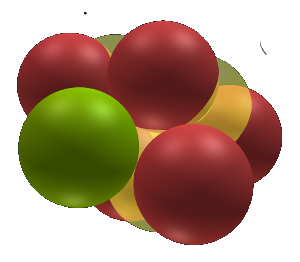Topics
The Dynamic Periodic Table is a great website to explore the properties of elements. Click on the properties tab at the top and you can explore melting points, abundance, valence, ionization, radius, hardness and a lot more. This periodic table does a great job of showing the vast amount of observations we have collected over that last couple hundred years.
If there is a structure to the nucleus then it must be reflected in the properties found in the periodic table. The approach taken when developing SAM was to try a structure, see if it explained the periodic table and if not throw it out. Then try another structure and see if it works. This resulted in many failed attempts. But persistence pays off and eventually Edo came up with a model that appears to explain many of the properties of the elements.
For example every element in the last column of the periodic table is an inert noble gas. What is it that makes an element inert?
According to SAM the nucleus grows in branches. Nature wants to keep things in equilibrium so it tends to complete a branch before starting the next branch. Completion in the case of SAM is to end the branch with a neutral ending. A neutral ending makes that part of the nucleus non-reactive, it is complete. If all the ends of all the branches are capped with neutral endings then the atom is an inert, noble gas. The 6 inert gases have 4, 20, 40, 84, 132 and 222 protons.
It works out perfectly that as we add protons and build the elements in succession when we reach 20 protons both of the endings of the nucleus are complete. As we add protons and build even larger elements when we reach 40 protons once again all the endings are neutral. As we continue to build larger elements the same thing happens at 84 protons - Krypton, 132 protons - Xenon and 222 protons - Radon. It is highly unlikely this is a coincidence. SAM's rules for how atoms build are simple and very succinct. According to SAM atoms can only build in one way. It is highly improbable that when all the endings are full and neutral that we coincidentally have the same number of protons as the inert elements. This is just a glimpse at the predictive power of SAM.
The following pages show examples of how the growing atom results in the periodic table as we know it today.
- Log in to post comments
